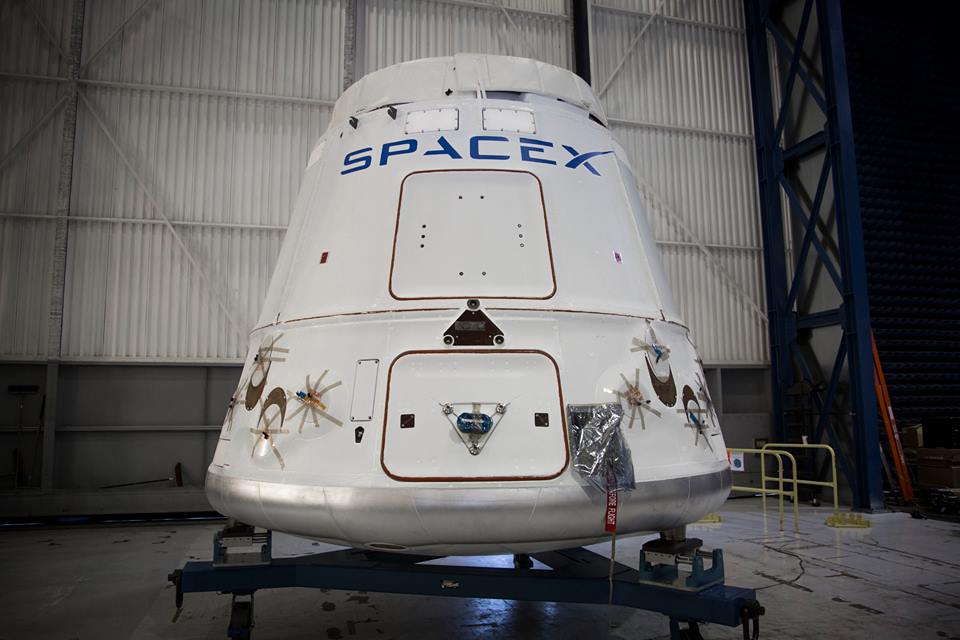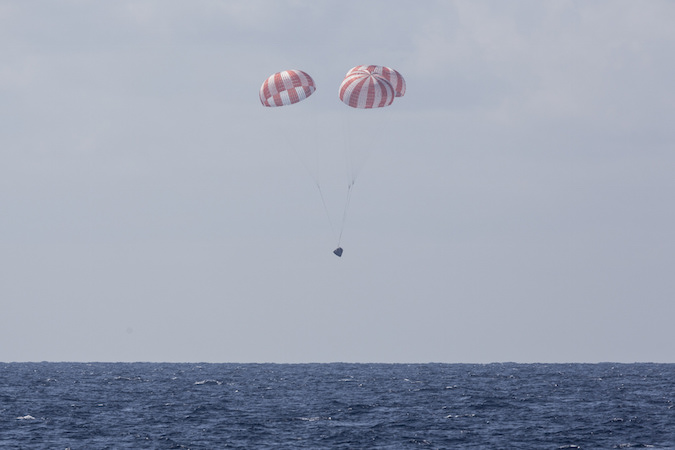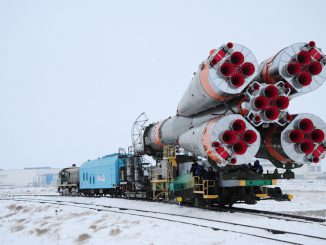
Taking a lesson from a launch failure last June, SpaceX wrote coded commands for future Dragon cargo capsules to deploy their parachutes for an emergency landing in the event of rocket explosions, starting with Friday’s resupply flight to the International Space Station.
The Dragon cargo carrier was never designed to survive a catastrophic in-flight rocket failure, but video footage showed the supply ship tumbling away from a debris cloud created by the breakup of its Falcon 9 booster minutes after liftoff from Cape Canaveral in June 2015.
Elon Musk, SpaceX’s founder and chief executive, said the Dragon’s re-entry capsule — the section designed to return to Earth — made it away from the rocket wreckage intact and broadcast telemetry as it fell back to the Atlantic Ocean. But the capsule was not programmed to deploy its parachutes in such a scenario, so it plummeted into the sea at terminal velocity and was never recovered.
A spacesuit, eight CubeSats, and 3,000 pounds of crew provisions and research experiments were lost inside the Dragon’s pressurized compartment. The mishap also destroyed a docking adapter designed to connect the space station with future commercial crew capsules.
Musk said after the launch failure that the capsule would have likely survived if it could have unfurled its chutes, and that future cargo missions would include software to increase the chances of recovery in such scenarios.
The upcoming launch is SpaceX first resupply run to the space station since the Falcon 9 mishap last year. It is the eighth of at least 26 cargo missions SpaceX has under contract with NASA through the early 2020s.
A change to the Dragon’s programming will allow the capsule to jettison its nose cone and begin the parachute deployment sequence in the event of a major rocket mishap, said Hans Koenigsmann, SpaceX’s vice president of flight reliability.
“If we would be in a similar situation, Dragon would deploy the parachutes and land softly in the water, and we would be able to save the science and the cargo off Dragon,” Koenigsmann said Thursday. “That has been implemented.”
The fix will be standard practice on all future Dragon resupply launches, he said.

Cargo in the Dragon spacecraft’s unpressurized trunk — such as Bigelow Aerospace’s experimental expandable space habitat on the upcoming mission — would still be lost. That module is designed to burn up in Earth’s atmosphere at the end of Dragon cargo missions.
“NASA thought that was a great capability to have,” said Kirk Shireman, NASA’s program manager for the International Space Station. “Certainly, in a similar situation, where we believe Dragon would survive.”
The Dragon mission scheduled for liftoff Friday at 4:43 p.m. EDT (2043 GMT) will dispatch 6,913 pounds (3,136 kilograms) of supplies and experiments to the space station. Nearly 3,800 pounds of that load is packed inside the capsule’s returnable pressurized section.
Shireman said the Federal Aviation Administration, the agency responsible for licensing commercial resupply flights to the space station, had to approve the contingency abort procedure. In legal terms, the emergency capability requires a new landing license issued by the FAA, he said.
The regulatory agency licensed the abort plan for all but the very last phase of the Falcon 9 rocket’s ascent into orbit, when the Dragon is near orbital velocity and its landing point could be thousands of miles downrange from Cape Canaveral.
The emergency landing capability is now available for the bulk of the 10-minute launch sequence, except for approximately 20 seconds at the end of the second stage burn, Koenigsmann said.
SpaceX is developing a human-rated “Crew Dragon” spaceship for launches starting next year. Those capsules will have propulsive abort rockets to quickly, and assuredly, send astronauts away from a failing rocket.
Boats deployed in the Atlantic Ocean along the Falcon 9’s flight path northeast of Cape Canaveral for a planned landing of the rocket’s first stage booster could be redirected to retrieve the Dragon spaceship in the event of a launch failure, according to Koenigsmann.
But those boats are not equipped with the same gear as the vessels SpaceX uses to pluck Dragons from the Pacific Ocean at the conclusion of successful missions.
“All the logistics about going to get it needs to be worked out, but it’s a great capability,” Shireman said of the abort plan. “NASA is very happy to have that contingency capability in place.”
Email the author.
Follow Stephen Clark on Twitter: @StephenClark1.



